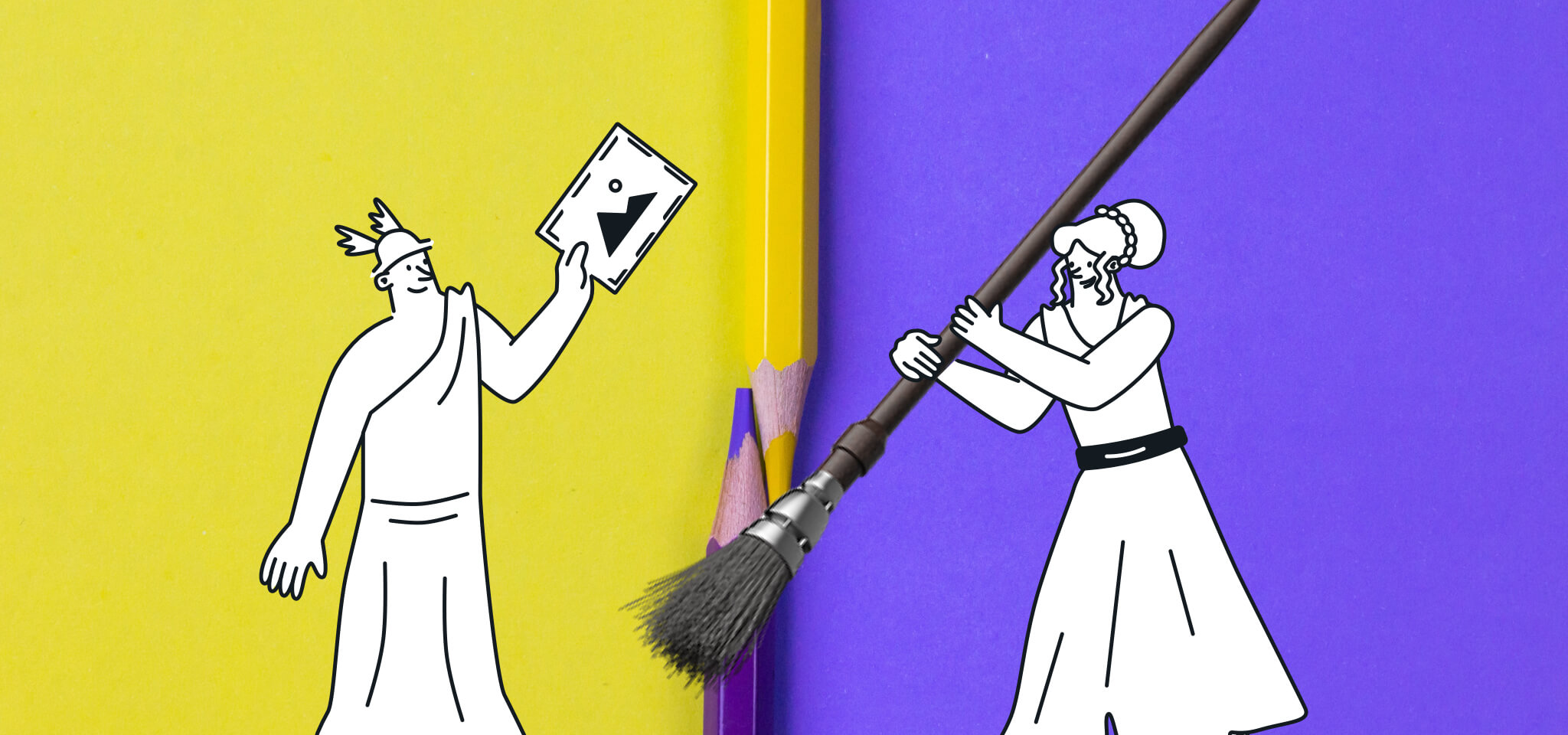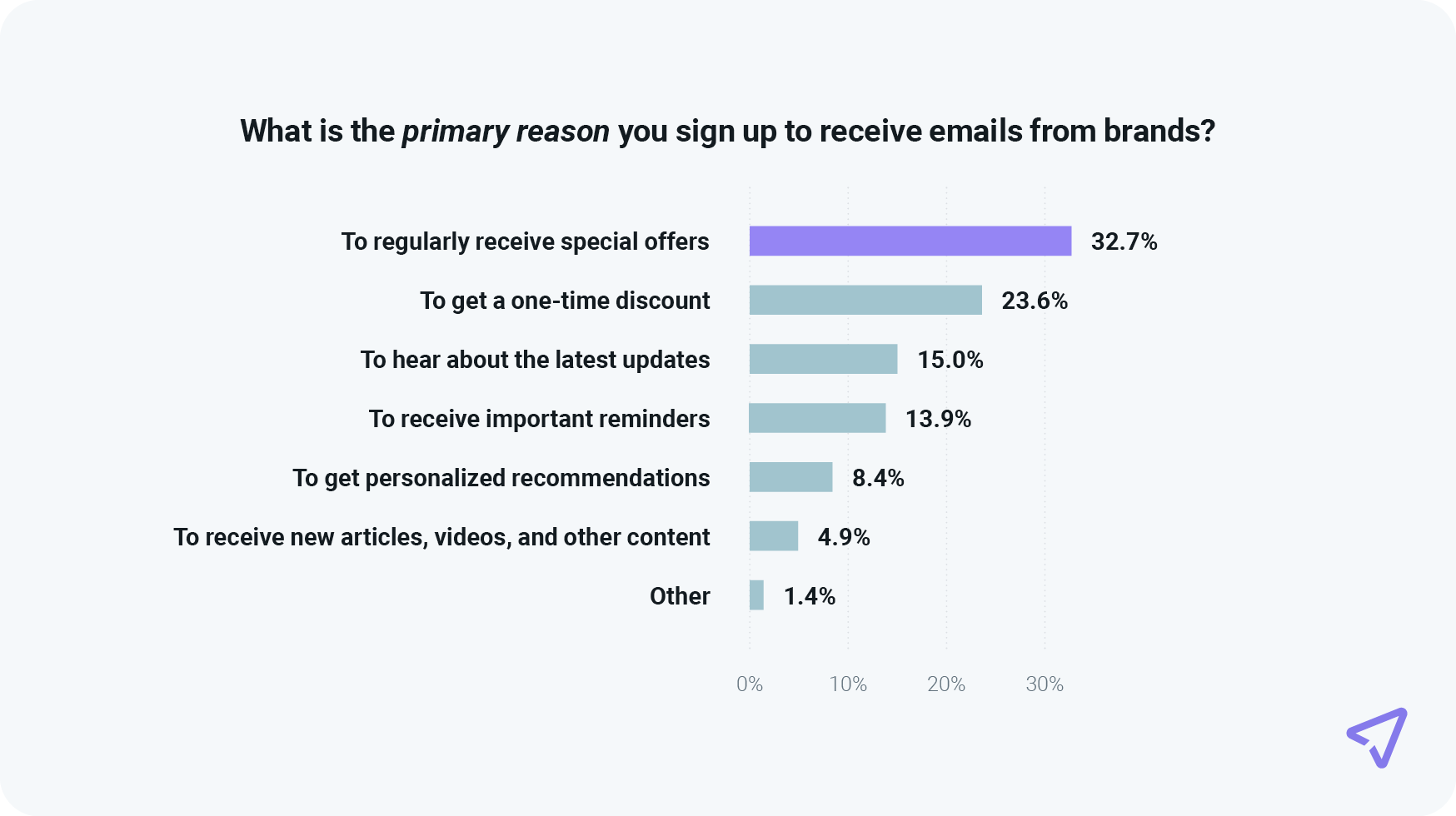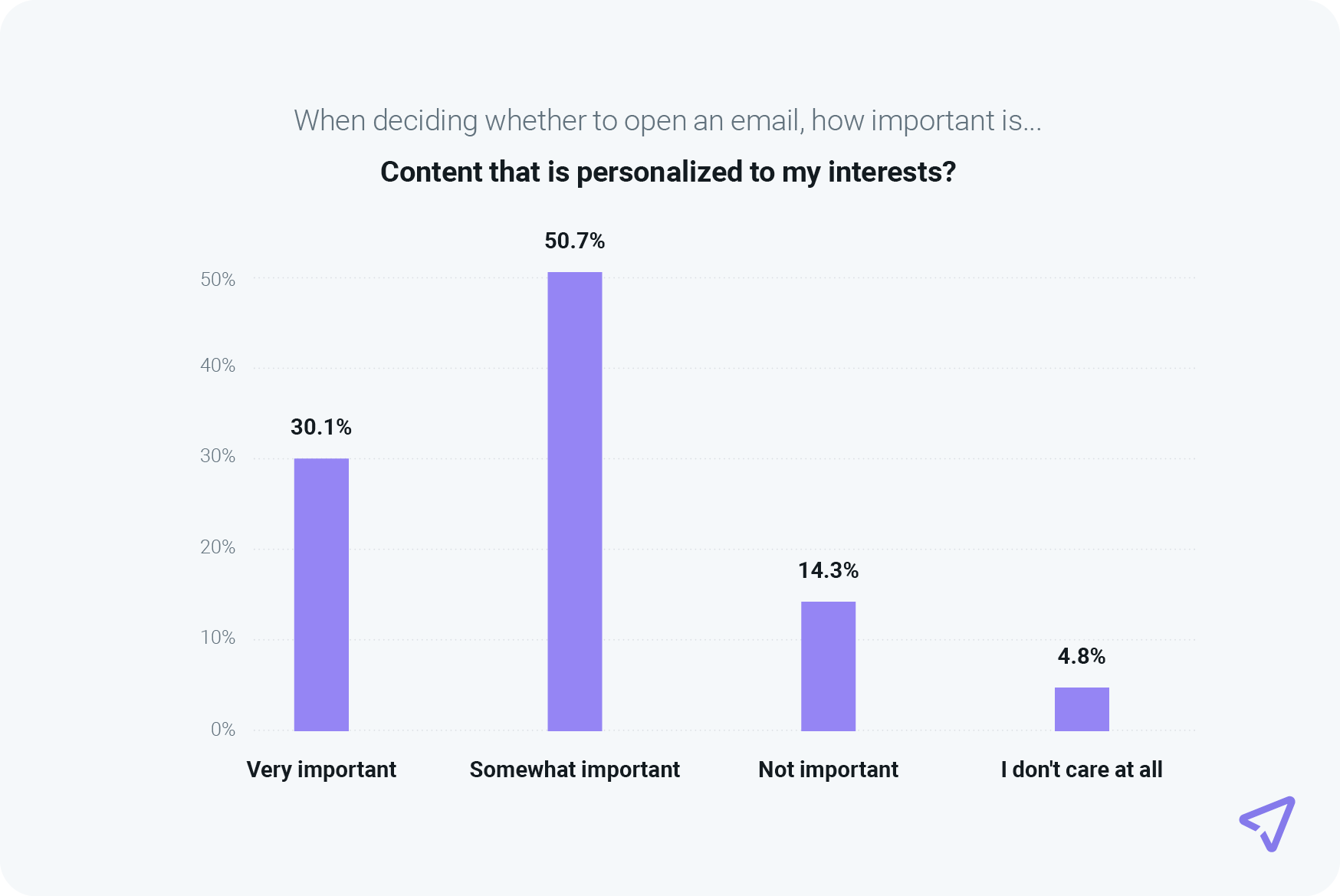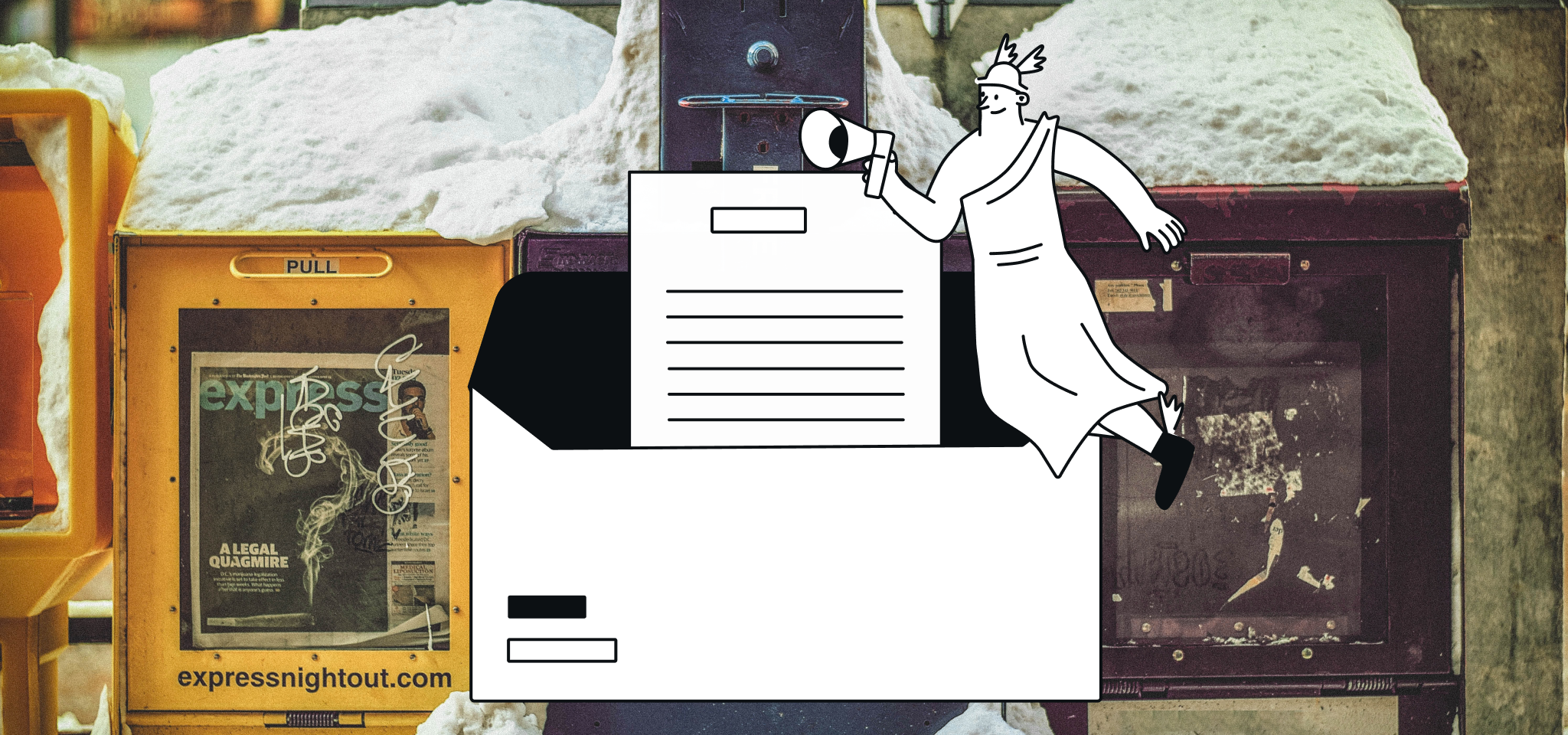Email best practices
Top B2C email marketing campaigns and how to optimize them
Trying to optimize your B2C email marketing campaigns? See what you can do to maximize engagement and conversions among your audience.

PUBLISHED ON
From stringing two cans together as kids to sending two dozen emails a day as adults, our use of communication evolves as we grow older – along with what we expect from it. If you ever tried the tin can and string method as a kid, you probably just thought it was cool to get a response, right? But when you’re sending to adults with full inboxes, you know that they’re likely looking for the emails with the most interest and value.
Businesses are constantly trying to fulfill these email needs and gain engagement and conversions from consumers. We know that it can be difficult knowing where to start when optimizing business-to-consumer email campaigns – almost as hard as creating a tin can telephone. That’s why we’re going to learn about these B2C email campaigns and how users interact with them – and how you can optimize them for the best results.
Ready? Let’s dive in.
Table of contents
Discount emails and special deals
Birthday emails
Personalized recommendations
Abandoned cart emails
What is B2C email marketing?
B2C (business-to-consumer) email marketing refers to the practice of businesses sending marketing emails to individual consumers. These are typically promotional messages, newsletters, product announcements, discounts, and other relevant content sent directly to potential or existing customers.
In B2C email marketing, the goal is to build brand awareness, drive sales, foster customer loyalty, and encourage repeat purchases. Marketers may segment their email lists based on factors such as demographics, purchase history, or engagement level to better tailor the content to their audience’s needs.
What is the difference between B2C and B2B email marketing?
While there are several distinctions between B2B (business-to-business) and B2C brands, such as the buying/selling cycle, length, and associated costs, when it comes to email marketing it boils down to target audience and messaging:
Target Audience:
B2B: Emails typically target specific professionals, decision-makers, and stakeholders within other businesses. You're essentially talking to someone with a specific job title and industry knowledge.
B2C: Targets individual consumers or households. Here, you're connecting with people on a personal level using their personal email addresses.
Messaging:
B2B: Depending on the brand, typically you focus on providing industry insights, research, and data to help businesses make informed decisions. The tone tends to be professional, addressing specific pain points and offering solutions.
B2C: Aims to create an emotional connection with the consumer. The language is simpler and emphasizes the benefits and features of your product or service. B2C emails are generally shorter and more to the point, designed to grab attention quickly and drive immediate action.
Feature | B2B email marketing | B2C email marketing |
|---|---|---|
Feature | ||
Target audience | Professionals, decision-makers, and stakeholders | Individual consumers |
B2B email marketing | ||
Tone of voice | Formal | Conversational |
B2C email marketing | ||
Content type | Industry insights, data-driven content, and solution-based | Benefits and features focused |
Length | Longer, structured, and more detailed | Shorter and to the point |
The most effective types of B2C email marketing campaigns
Discount emails and special deals
Discount emails are exactly what they say they are – types of emails that contain financial discounts, coupons, or other special offers (like free stuff). And everyone likes free and discounted stuff. This can translate into business gains, as a brand can use discounts and offers to incentivize conversions from new customers, reward existing customer loyalty, and call attention to certain products and services they want to promote. The effect is positive for the customer and encourages them to complete current and future transactions with the brand.
Unsurprisingly, B2C consumers are more than happy to interact with discount emails. In our 2024 Email Engagement Research Report, 37.7% of respondents said the primary reason they sign up to receive emails from brands was to stay informed of an special offers. An additional 23.6 % said they signed up to get a one-time discount.

Judging by this response, discount emails are a great way to pull in large numbers of users and increase open rates, click rates, and conversion rates. But how do you optimize them? Let’s look at a couple of examples and what we can learn from their marketing efforts.
Creating great content for your discount emails
When advertising discounts, don’t just include the same content for all your ecommerce audience members. Use dynamic content to personalize and tailor your message to products or services your user has already purchased or viewed, like the clothes below. When they see something that interests them specifically, they’re much more likely to engage and complete another buying cycle.
Our first example comes from Forever 21. This discount email stands out because it not only provides a, well, discount – duh – but because it contains dynamic email content that’s specifically targeted to the individual, with easy links to buy (and take advantage of the offer).

Finding the right design for your discount emails
When it comes to B2C emails, design is just as important as content. For discount emails, always put your CTA as close to the beginning of the message as possible for maximum visibility. Don’t make people scroll for it. You can also use a contrasting color to draw the eye to the CTA and to the action you want users to take.
Our second example comes from Winc, a wine delivery service. Winc includes a lot of information in this email without it feeling cluttered or overwhelming, most notably an eye-catching CTA and a short, simple-to-follow three-step summary of their business.

Birthday emails
Everyone loves birthdays… there’s the promise of fun, celebration, and of course, gifts. In many ways, they’re similar to discount emails, and they offer the same kind of benefits for brands.
Free and discounted birthday gifts promote brand awareness and give the user a chance to try your product or service when they otherwise may not have. If they like the gift and purchase more from you in the future, you’ve converted a new customer on the strength of your birthday communication. You get a transaction, and they get a present.
The lure of birthday gifts in emails may be why users respond to them at pretty high levels – according to our report, 44.1% of respondents said they read birthday emails and clicked through to use a promo code or get more info. A further 43% said they read them and saved them for later.
Birthday emails don’t have hard-and-fast rules for content and design, but there are ways you can generate high engagement and influence purchasing decisions.
Creating great content for your birthday emails
Say it again, y’all – people like free (or at least discounted) stuff for their birthday. Nobody wants to open a birthday-themed email that has nothing but a hard sales pitch. So, whether you’re offering a free product or discounted service, make your email worth opening.
This Subway promotional email gets high content marks. It’s an unexpected late birthday surprise, and it clearly tells the reader what they get to celebrate, and how to get it. It’s to-the-point, attention-grabbing, and fun. Emails like this one generate customer goodwill and make it more likely that your user will complete more conversions in the future.

Finding the right design for your birthday emails
When designing birthday emails, keep your brand guidelines and conversion goals in mind. But don’t forget to add images, gifs, and other fun graphics and elements that celebrate the occasion and make the reader feel good.
Hulu’s birthday email also goes the freebie route, but it focuses more on the design aspect. It’s on-brand, but definitely not bland. There’s an eye-catching burst of birthday confetti, and the email is dominated by a gif from one of Hulu’s popular offerings, Seinfeld. The email captures a sense of fun while still reminding the user of what they stand to gain – Kramer and friends – by opting into a free trial.
Personalized recommendations
Unlike discount or birthday emails, personalized emails can be themed around pretty much any event or occasion. Therefore, there’s lots of opportunities to hook users with personalized messaging. Yes, it’s easy to send a single mass email to every member of your email list – but it’s not tailored to their interests, which makes it more likely that they’ll ignore you or unsubscribe completely. Offering personalized messages targets users based on what they specifically want and need, which makes the possibility of a transaction much stronger.
And users prefer it that way – our research shows that 80.8% of respondents said that personalized content was either somewhat, or very important, when deciding whether to open brand emails.

So, how do you make personalized emails work for you?
Creating great content for your personalized emails
Personalized emails often include recommendations based on the user’s preference or purchase history are great for upselling and cross-selling. You can use information you have about your content (like contact properties or behavioral data) to create preference-based recommendations and advertisements no matter what industry you’re in.
Segmentation is a good way to target audience groups and demographics based on general preferences, but it’s even better to use dynamic content (like Forever 21 does in the aforementioned discount email example) to give each viewer up-to-date and adaptable advertisements based on what they’re interested in right now.
For example, after you finish a TV show or movie, you probably start thinking about what to watch next, right? This is why, when it comes to content for personalized emails, Netflix is a great example of keeping the user engaged with your brand.

Netflix doesn’t just congratulate the viewer for finishing a show. Instead, it offers a wide variety of new suggestions based on the viewer’s current preferences and recent watch history. This type of relevant personalization keeps the user interested in new products and more likely to choose another Netflix offering than go to another streaming service.
Finding the right design for your personalized emails
On the design side of things, keep it simple. Don’t try to recommend every possible thing the user may be interested in. Pick a handful of options and lay them out cleanly, with obvious CTAs and links to read more and buy.
The below email from Lyst is a good example of personalized email design. The message doesn’t waste space with a lot of unnecessary text. Instead, the user’s eyes are drawn right to the personalized styles on offer. Neatly placed, color-contrasting links make it easy for the user to see more options and purchase what they like.

Abandoned cart emails
Abandoned carts can feel like a marketer’s worst nightmare. Someone liked you enough to almost buy from your brand… but not quite. Customers have myriad reasons for choosing to abandon a transaction, and sometimes they’re gone for good.
But, often, a little nudge in the form of an abandoned cart email – with a reminder of what they’re missing out on – can be enough to bring them back for a purchase. Brands that send these emails can only gain from converting an ambivalent customer… if you send it, they can come (back).
Compared to other B2C emails, abandoned cart emails had the lowest rates of response in our report. Just 21.1% said they’d read and click on an abandoned cart email, and 29.1% said they’d save it and read it later. It doesn’t seem like that much, but that’s 21.1% more than you had before you sent that email.
This makes sense – people change their minds. The good news is that you can help change them back.
Creating great content for your abandoned cart emails
What’s a great way to change a customer’s mind? Offer them a good deal. A consumer may abandon their cart for one or several reasons, like price, shipping time, or a loss of interest in their items.
But, a discount can lure consumers back to complete the purchase. If an item is cheaper, it can help overcome a longer wait for delivery or a sense that the product isn’t needed. And of course, lowering the price assuages concerns over expense and affordability.
Alex Mill’s abandoned cart email does this well by reminding users of clothing picks the website has saved for them – with a discount. You can use discounts to entice subscribers to complete transactions immediately, or as a re-engagement effort if your first abandoned cart email goes unnoticed.

Finding the right design for your abandoned cart emails
For design, simplicity is the key to abandoned cart emails. Consumers already respond to them at lower rates than other B2C emails, and you don’t want to turn off your audience with a lot of unnecessary images and text. You can, however, include images and graphics reminding the customer of what they’re missing (and creating a sense of urgency – the items won’t last long!), along with a CTA to come back and complete the purchase.
As with all other emails, your CTA should be placed near the top of the email. Don’t make users scroll for it. Use a color or font that fits with your brand, but will still stand out and get attention. If you have an image alongside it, use colors that draw the eye to the CTA… after all, that’s why you’re sending the email in the first place.
LEGO does this in a fun way by including a large image of a LEGO figurine with binoculars. It’s a good reminder without feeling pushy or heavy. The colors are on-brand (that LEGO yellow features heavily), but the CTA is designed in a contrasting blue that stands out from the rest of the graphic. The CTA is also repeated with an image and price quote for the item the user viewed. The whole email is engaging without being too cluttered – the CTA is still front and center.

Testing your B2C email marketing campaigns
If you’re not A/B testing your messages, you’re missing out. A/B testing lets you optimize your email marketing campaigns by testing variations of the same message to different audiences. You can test pretty much anything – subject lines, content, design, price inclusion, CTA style, color... For example, you can send two versions of the same email to a portion of your list to find what works best: one to 10% of your audience that has a red CTA, and one to another 10% that’s exactly the same… except it has a blue CTA.
In this way, you can test different elements to see what audience engages with the most, and then send the winning version to the rest of your email list. It’s like your own email marketing cheat code.
You can also use A/B testing to experiment with different sending times (i.e., one version sent at 9 AM, and the other at 10 AM). That’s one thing about B2C email campaigns: It’s all about when you send them. Your audience members may have different times when they’re most likely to open them. Make sure you A/B test these messages with different send times to ensure they have the highest possible chance of conversion.
For example, you can send abandoned cart emails to one set of users 30 minutes after they abandon their cart, and to another group after 60 or 90 minutes. You can even try sending an email one or two days later. The same can be done with birthday emails – does a birthday freebie drive more conversion on the actual date or a couple days before?
From there, you can use metrics to track open rates, click rates, and conversions for each segment. Finding the segment with the highest engagement– for example, the segment that received the email 60 minutes after abandoning their carts – will let you know when you should try sending your emails to your general audience.
Sending effective B2C email marketing campaigns that convert
There are a lot of tips to keep in mind when creating B2C email campaigns, but these campaigns highlight some of the best optimization practices you should keep in mind.
Discount emails: Use dynamic, relevant content that appeals to the reader’s desire to use the discount, and make your CTAs bold and easy to follow.
Birthday emails: Offer gifts to generate goodwill and encourage customer conversion and retention, and keep your design celebratory and fun.
Personalized emails: Use segmentation and dynamic content to entice viewers with up-to-date suggestions, and don’t try to suggest everything – stick to a few key products or services.
Abandoned cart emails: Offer discounts to increase the likelihood of a repeated purchase, and test your messages to figure out the best time to send them.
So there you have it – tips on optimizing some of the most common B2C email campaigns. Stay focused on your audience, test all the things, and your B2C email marketing strategy is sure to work even better than a tin can telephone.
Download our full Email Engagement Research Report here for more insights on email in 2024 and beyond, and join our newsletter to stay up to date on the latest trends and create amazing, long-lasting relationships for your brand.








